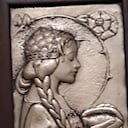Tasseography is a fortune-telling method that interprets which of the following?
Tasseography (also known as tasseomancy, tassology, or tasseology) is a divination or fortune-telling method that interprets patterns in tea leaves, coffee grounds, or wine sediments.
The terms derive from the French word tasse (cup), which in turn derives from the Arabic loan-word into French tassa, and the Greek suffixes -graph (writing), -logy (study of), and -mancy (divination).
Tasseomancy followed the trade routes of tea and coffee and was practiced by both Baltic and Slavic nations. It is closely related to the Romani people, whose nomadic lifestyle contributed to the spread of the practice, though its exact origins predate Romani culture. Throughout its history, different regions have practiced it with slight variations which indicates that this form of divination was an oral tradition. It is not considered a closed cultural practice.
Western tasseography can be linked to medieval European fortune tellers who developed their readings from splatters of wax, lead, and other molten substances.
More Info:
en.wikipedia.org






